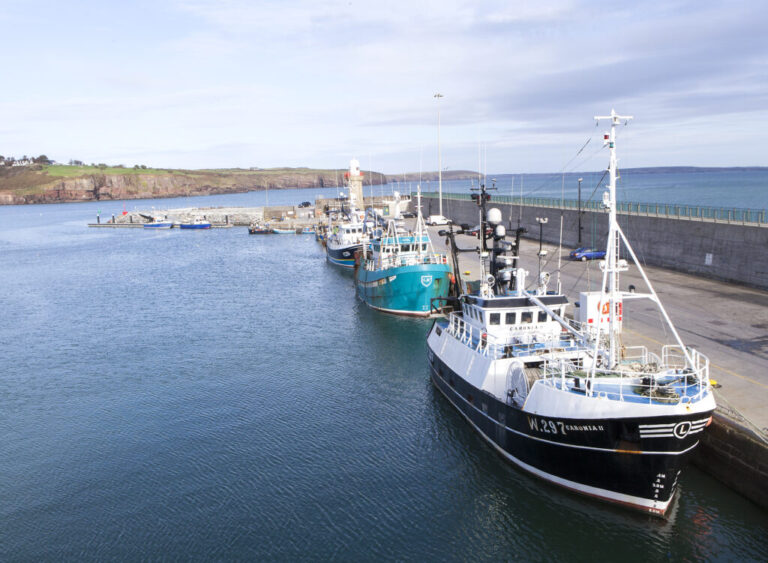BIM published new report highlighting vital role of Ireland's main fishing ports
Share
Source: BIM Ireland’s main fishing ports continue to support jobs, businesses, and rural communities but face growing challenges. This is according to new reports published by Bord Iascaigh Mhara (BIM) Ireland’s Seafood Development Agency.
The reports, entitled the Economic Impact of the Seafood Sector at Ireland’s Main Ports, track five-year trends and include a national report and ten individual port reports, providing detailed insights into the challenges and opportunities facing each port community.
In 2023, Ireland’s seafood sector supported over 8,760 jobs across these ports, generating an estimated €736 million for the Irish economy. This includes direct employment in fishing and seafood processing, and employment created in transport, services, and local businesses.

The reports reveal changes in the sector since the first reports were published five years ago. Fishing has faced several key challenges including reduced quotas and rising costs, resulting in a 23% decrease in direct Gross Value Added (GVA) and a 15% drop in numbers employed in the sector.
GVA for aquaculture has decreased by 7.5%. However, seafood processing accounts for a growing share of jobs and GVA in many of the ports studied providing a vital economic boost with ports such Ros an Mhíl in Co. Galway and Howth in Co. Dublin experiencing particularly robust growth.
The reports demonstrate how each port has its unique story. Castletownbere and Killybegs remain vital seafood hubs, while Howth has pivoted towards seafood processing. The reports also reveal how Union Hall in West Cork, Greencastle, Co. Donegal and Kilmore Quay in Co. Wexford are being challenged by reduced quotas, labour shortages, and changing market dynamics. However, the studies also highlight the vital role these ports play to local economies, especially in remote and coastal areas with limited alternative industries.
“The data contained in these BIM reports, developed in partnership with Oxford Economics, clearly illustrate the leading role of Ireland’s fishing ports to local economies. Ireland’s main ports are important for seafood production and for sustaining jobs and communities along the coast. While the fishing sector faces ongoing pressures, Ireland’s ports have shown remarkable resilience, with seafood processing and supply chain industries playing an increasingly important role. Supporting these ports so they can continue to adapt and evolve will ensure they thrive for future generations.”
BIM highlighted that while the sector has adapted well to shocks such as the UK’s departure from the EU and the COVID-19 global pandemic, challenges remain. Inflation, skills shortages, quota pressures, and Offshore Renewable Energy (ORE) developments will require ongoing focus to secure the future of these vital seafood hubs.
Richard Curtin, BIM Senior Economist, BIM extends thanks to those who took part in the socioeconomic survey for this study and to all those who were consulted and shared insights and time.
You can find the reports here. https://bim.ie/publications/fisheries/